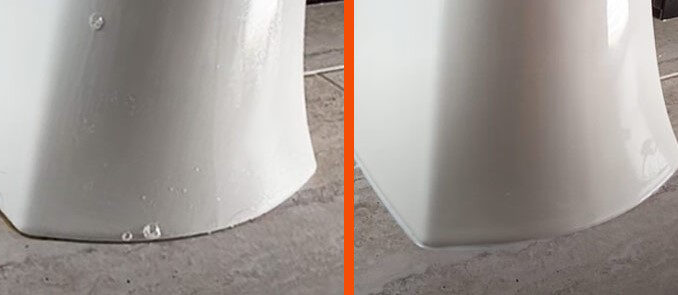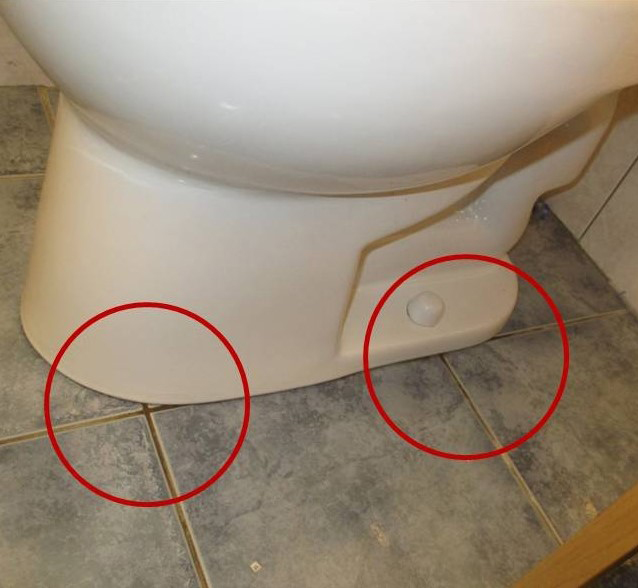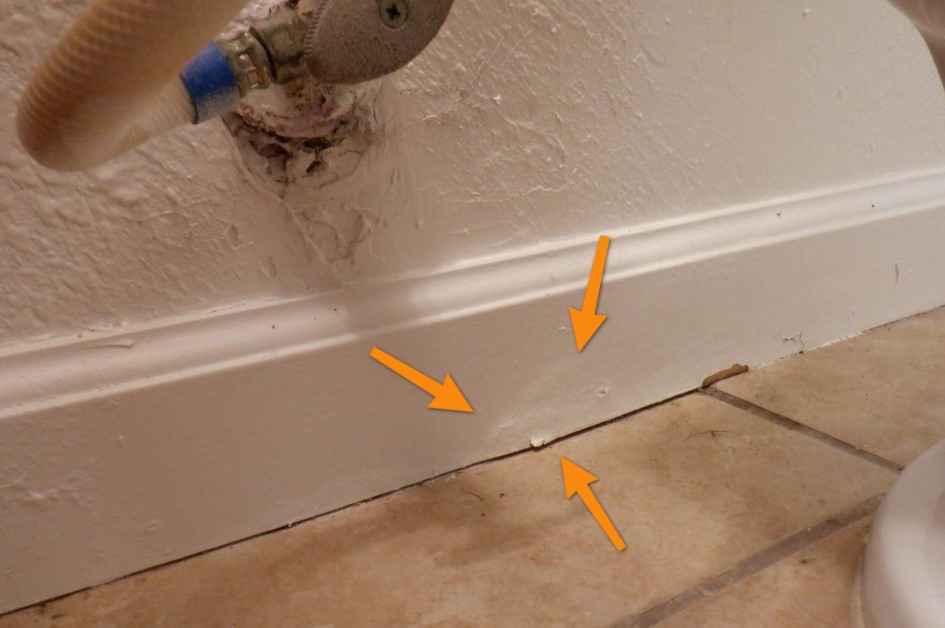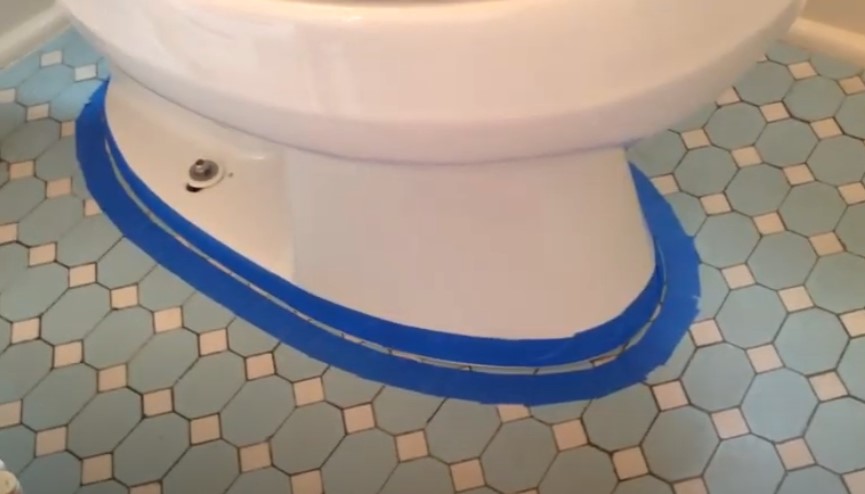
If you do caulk, then what is the best way to properly caulk?
We provide answers on whether or not to caulk the toilet base to the floor as we look into the pros and cons of this hotly debated issue.
Q: I am buying a house and the home inspection report identified missing caulking around the base of the toilet. My agent says they heard from a plumber that the caulking is unnecessary, and might hide leaks. Does the toilet need caulking or not?
A: If you look at many of the conversations in online DIY and plumbers’ chat rooms, you are not the only one who is confused. The debate over whether or not to caulk around toilet bases can even been rather heated at times. Many people’s reasoning is based on tradition and personal opinion, which is fine but not much help.
The improved versatility and durability of modern caulking products rarely makes its way into the discussion. Also missing from the many discussions is clarification about some of the problems that might occur, and how to solve them. We have looked into the pros and cons in detail to help people find the right answers.
The most frequent disagreement is over leak detection.
The main reason people give for not caulking around toilet bases is that they feel the caulking could hide leaks. If the leak is undiscovered, then the resulting damage could become severe. Without caulk (as the theory goes), the leaking water would flow out freely and be noticed right away.
While that might be true if there was a sudden and major breakage in a pipe or a complete failure of the wax ring, that scenario rarely happens. Overwhelmingly, most leaks are small and gradual, and caused by a degraded wax ring which is in turn caused by a rocking loose toilet. Leaks at the base of the toilet are caused by improper installation of the wax ring, a loose toilet, or a crack in the porcelain. Then, the leaks typically do not spread out onto the bathroom floor, but instead soak down into the underlying structure. Water follows the path of least resistance, downward, and the leaks are usually noticed from the space below the toilet when looking up from a lower-level room or sub-area. Leaks under the tub, for example, are often found in the same way. In apartments, it is common for the tenant below to be the one who first notices a problem.
So, this argument for not caulking has many flaws, as it is based upon unrealistic circumstances which fail to consider actual realistic leak behaviors. On the other side of the discussion are a number of real-world reasons why caulking around the toilet has positive benefits.

Caulk prevents other sources of water from seeping under the toilet.
The same seal that is alleged to prevent a leak from being discovered is actually beneficial because it prevents “external” water from seeping under the toilet. Water splashed out of a shower, bathtub, or overflowing toilet is unable to seep under the toilet if that toilet is properly sealed to the floor.
Without caulking, any external water that may creep under the toilet could remain there for a long time. The water may begin to stagnate and provide a breeding ground for harmful organism growth (like mold or fungus). The application of caulk to the toilet prevents this from happening, and arguably the bathroom is healthier as a result.
Caulking around the toilet adds stability on uneven floors.
Improperly installed wax rings and loose toilets are the #1 cause of leaks. Nuts and bolts are usually used to secure the toilet base to the floor flange. But if the floor is uneven, then the toilet might tend to rock back and forth as it works itself loose. A rocking toilet is an improper installation that is not only frustrating and possibly noisy, but that condition can also be a source of trouble for distorting the wax ring and even the durability of the toilet’s porcelain structure. A rocking toilet should be shimmed and caulked because it will eventually damage or break the wax seal, resulting in waste water leaks. But over-tightening the nuts is also risky because you can easily crack the porcelain.
Using caulking to seal the toilet to the floor adds both the advantage of cleanliness and it provides a layer of evenly distributed padding to compensate for that uneven floor. Once fully cured, a good quality caulk will provide and effective and durable cushioning to stabilize a toilet.
Caulking, but leaving a gap at the rear of the toilet.

How often do you stoop down to look behind your toilet? Leaking water can wick upwards in some materials (see image). How might your wall become water damaged and have dry rot or other organism growth if water leaks under the wall’s base molding because you never looked to find (in theory), a small trickle of water? Some plumbers insist that if you must caulk, then leave a gap in the caulking at the rear. But that is the worst location to leave a gap, and is just asking for costly water damage and wood deterioration inside your wall. If anything, if ever there was a good reason to leave a gap, then at the front of the toilet would be the most logical place despite its unsightly appearance.
A properly installed and seated toilet, with a quality new wax ring, will not leak. Do not leave any gap in the caulking.
Plumbing codes require caulking a toilet at the floor.
In California, you are required to follow the California Plumbing Code which is based upon the Uniform Plumbing Code (UPC) as developed by the International Association of Plumbing and Mechanical Officials (IAPMO). Section 402.2 Joints of the UPC requires “Where a fixture comes in contact with the wall or floor, the joint between the fixture and the wall or floor shall be made watertight.” A toilet is a fixture. Caulking (or some other watertight sealant) around the base of the toilet is required. This requirement applies to both new builds and remodeling (i.e. the installation of a new toilet fixture). Leaving a gap in the caulking fails to meet the “watertight” requirement of this section.
Qualified and licensed plumbing professionals generally have the required knowledge to know caulking or some other watertight sealant is beneficial and required around the base of the toilet where it meets the floor. It is also a great idea to caulk around the edges and bottom of any molding that is installed where the wall meets the floor. DIY installers and unlicensed laborers might be tempted to skip these important steps, but the resulting damage from an improper installation could quickly become very costly. Also, if you later decide you want to sell the property, installation that are not up to current building code might put off potential buyers, or at the least make them more cautious in their consideration of the property.

It looks better and helps prevent unpleasant odors.
Popular opinion is that a clean, white caulk line provides a neat and professional finish. An unfinished gap might hide spiders or insects, and allow harmful water to collect.
Caulking also prevents unpleasant odors that can sometimes escape from the plumbing system and out under the bottom of the toilet. The problem will only be made worse if mold or fungus is allowed to grow under there.
Caulking the joint takes just a few minutes and has a wide range of benefits. With a properly installed toilet and new quality wax ring, those benefits far outweigh the unlikely event of a theoretical random leak being discovered more quickly.
We hope this article provides you with useful information about whether you should caulk around the base of a toilet. SacPro home inspectors stay up to date on training and industry requirements. SacPro home inspection reports provide the most recent information about this issue and other matters.
SacPro Home Inspections is committed to always providing our clients with excellent service. Our ASHI certified home inspectors have the professional experience to help you if you are buying or selling a home. We service the greater Sacramento area including Antelope, Arden Park, Auburn, Arbuckle, Carmichael, Citrus Heights, Davis, Dixon, East Sacramento, El Dorado Hills, Elk Grove, Elverta, Fair Oaks, Folsom, Garden of the Gods, Granite Bay, Natomas, Orangevale, Rancho Cordova, Rancho Murieta, Rio Vista, Rocklin, Rosemont, Roseville, Sacramento, Sierra Oaks, West Sacramento, Williams, Winters, and Woodland areas. We would be pleased to help you with obtaining a top-notch home inspection report.
